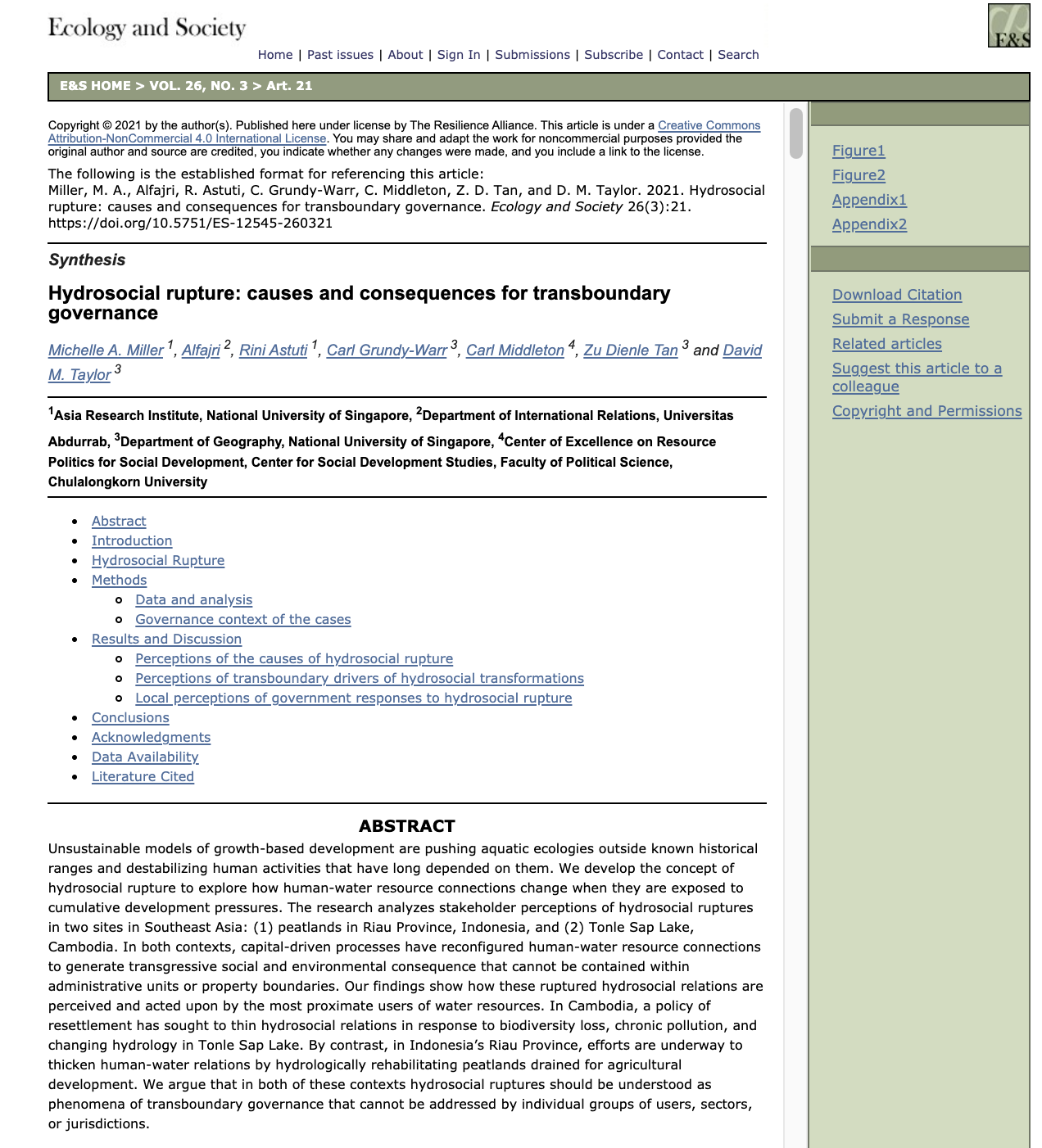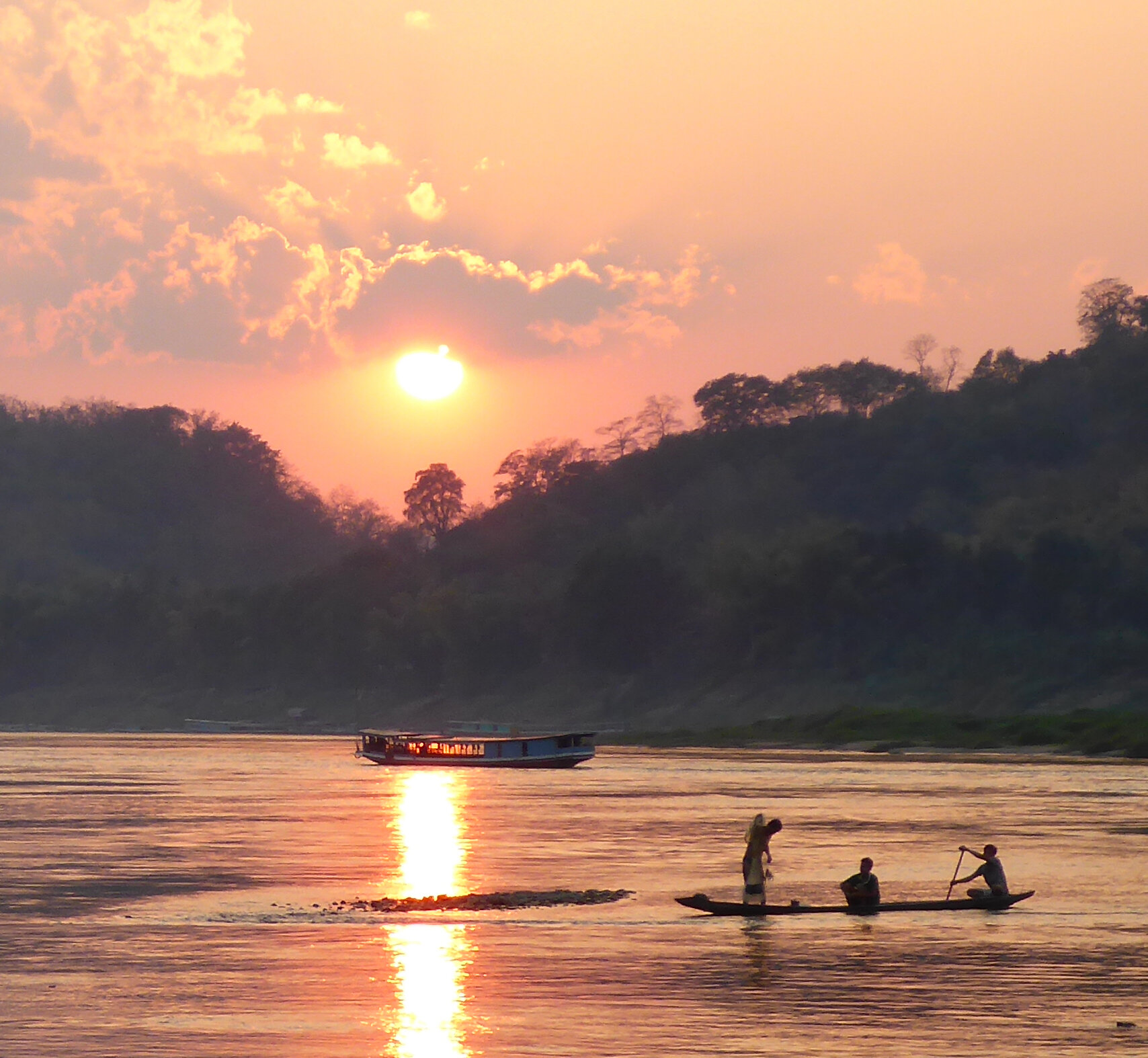บทสรุป: การมีส่วนร่วมในท้องถิ่นเพื่อสันติภาพเชิงบวก
ตั้งแต่กลางทศวรรษ 1990 ประเทศไทยประสบกับวิกฤตการเงินครั้งใหญ่หลายครั้ง การรัฐประหารโดยกองทัพ 2 ครั้ง การเปลี่ยนแปลงรัฐธรรมนูญ 2 ครั้ง และปัจจัยอื่น ๆ ที่ส่งผลให้เกิดความไม่มั่นคงทางการเมืองและสังคมตลอดจนความขัดแย้ง อาจจะดูเหมือนว่าขัดแย้งกันในกลุ่มผู้ซึ่งไม่เห็นด้วยอย่างกระตือรือร้น เช่น กลุ่มองค์กรชุมชนในภาคเหนือของประเทศไทยที่มีส่วนช่วยทำให้เกิดสันติภาพเชิงบวกโดยเฉพาะอย่างยิ่งในบริบทที่มีความเสี่ยงอย่างแท้จริงของขัดแย้งที่รุนแรงในบางกรณี จากการวิเคราะห์ข้างต้น ผมสรุปได้ว่าพวกเขาเหล่านั้นได้ยกระดับจุดแข็งของแกนหลักของดัชนีสันติภาพเชิงบวกเพื่อสร้างพื้นที่ทางการเมืองและขีดความสามารถในการมีส่วนร่วมสำหรับท้องถิ่นมากขึ้นและยังได้รับการสนับสนุนเงินทุนบางส่วนจากรัฐผ่านสถาบันพัฒนาองค์กรชุมชน (องค์การมหาชน) สิ่งนี้อาจดูเหมือนขัดแย้งกับความจำเป็นซึ่งหลีกเลี่ยงไม่ได้ของผู้กำหนดนโยบายจากบนลงล่าง (top-down policy maker) อย่างไรก็ตามการรวมตัวกันของการกระทำเหล่านี้ที่เกิดขึ้นอย่างต่อเนื่องมานานหลายทศวรรษมีแนวโน้มที่จะต่อต้านความไม่มั่นคงโดยการสนับสนุนเงื่อนไขในท้องถิ่น นโยบายระดับชาติ และความสัมพันธ์ระดับท้องถิ่นกับรัฐบาลแห่งชาติที่มีความเทียบเคียงกับระดับคะแนนดัชนีสันติภาพเชิงบวกที่ดี
องค์กรชุมชนเหล่านี้ยังผลักดันให้เกิดวิธีคิดใหม่ๆ เกี่ยวกับนโยบาย พวกเขาเน้นความสัมพันธ์แบบพึ่งพาซึ่งกันและกันระหว่างผู้คนและธรรมชาติในการอภิปรายเกี่ยวกับนโยบายและพวกเขาเสนอแนวทางต่างๆ เช่น การรวมสิทธิธรรมชาติไว้ในนโยบาย[xix] รายงานทางวิชาการและองค์กรต่างๆ ตลอดรวมถึงการจัดประชุมสาธารณะได้เพิ่มความชอบธรรมให้กับแนวคิดเหล่านั้น ดังที่นักวิชาการนามว่า Joanne Barker ได้ตั้งข้อสังเกต น้ำ “สอนให้เราคิดเกี่ยวกับองค์ความรู้ในการเคลื่อนที่อย่างต่อเนื่อง” และ “ให้ความสำคัญกับการเชื่อมต่อและปฏิสัมพันธ์ระหว่างน้ำ ดินและอากาศ ระหว่างมนุษย์และสิ่งอื่นที่ไม่ใช่มนุษย์”[xx]
การปรับกรอบนโยบายและการกำหนดมุมมองของระบบเป็นสิ่งสำคัญ การสร้างสิทธิในธรรมชาติและความเป็นประชาธิปไตยของการจัดการในกฎหมายและวัฒนธรรมต้องใช้ความพยายามอย่างต่อเนื่อง หากนโยบายคือการสร้างเงื่อนไขให้สังคมเจริญแล้ว [xxi] แนวทางในการกำหนดนโยบายจะต้องอำนวยความสะดวกในการทำความเข้าใจและตั้งสมมติฐานเกี่ยวกับ 1). อำนาจ เช่น ความเคารพต่อมนุษย์ และ 2). ธรรมชาติของความสัมพันธ์ เช่น การเคารพใน 'ธรรมชาติ' และการพึ่งพาซึ่งกันและกันของมนุษย์กับส่วนอื่นๆ ของโลกธรรมชาติ องค์กรชุมชนที่ได้รับข้อมูลและการสนับสนุนได้มีการยกประเด็นเหล่านี้และประเด็นอื่นๆ ที่เกี่ยวข้องกับการเชื่อมต่อกันระหว่าง น้ำ – พลังงาน - อาหาร[xxii] และคำแนะนำการประเมินระบบนิเวศแห่งสหัสวรรษ (Millennium Ecosystem Assessment)[xxiii]
การนำดัชนีสันติภาพเชิงบวกมาใช้เป็นกรอบสำหรับผลการวิเคราะห์นโยบายในการตระหนักถึงคุณค่าของการมีส่วนร่วมที่สำคัญขององค์กรชุมชนต่อความมั่นคง สังคมที่เท่าเทียมกันด้วยความสามารถระดับสูงของมนุษย์และความสัมพันธ์เชิงบวกมิฉะนั้นแล้วการกระทำขององค์กรชุมชนเหล่านั้นอาจถูกมองโดยผู้กำหนดนโยบายว่าเป็นอุปสรรคต่อการบรรลุสิ่งสำคัญของการวางแผนที่ได้กำหนดไว้ในระดับชาติ ดัชนีสันติภาพเชิงบวกมีช่องว่างบางอย่างที่ต้องใช้วิวัฒนาการเพิ่มเติมในการเป็นเครื่องมือหรือการประยุกต์ใช้การวิเคราะห์เพิ่มเติมพร้อมกัน การประเมินมูลค่าทางจิตใจ เศรษฐกิจที่ไม่ใช่เงินสดและคุณค่าทางจิตวิญาณไม่ได้มีการปรากฎอย่างเปิดเผยในกรอบดัชนีสันติภาพเชิงบวก และคำศัพท์ดัชนีสันติภาพเชิงบวก เช่น “ทุนมนุษย์” ไม่ได้สะท้อนถึงความเข้าใจของคนในท้องถิ่นเกี่ยวกับขีดความสามารถและความสัมพันธ์ของมนุษย์อย่างเต็มที่แต่ดัชนีสันติภาพเชิงบวกสามารถช่วยให้ความชัดเจนแก่ผู้กำหนดนโยบายถึงสิ่งที่ผลักดันการดำเนินการของชุมชนและการแสดงความจำนงนี้ให้ความกระจ่างและตระหนักรู้ถึงบทบาทสำคัญขององค์กรชุมชนในการสร้างสันติภาพเชิงบวกจากระดับท้องถิ่น
——-
*แอนดรูว์ สโตน เป็นนักระบบนิเวศวิทยา นักการศึกษาและพันธมิตรสันติภาพของโรตารี (Rotary Peace Follow) มีพื้นที่ทำงานอยู่ในลุ่มแม่น้ำโคลัมเบีย ประเทศสหรัฐอเมริกา ในทุกๆ ปีเขาจะใช้เวลา 3 เดือน เริ่มตั้งแต่ปี 2554 ในกลุ่มประเทศลุ่มแม่น้ำโขงตอนล่างในการสนับสนุนองค์กรชุมชนและเครือข่ายโดยให้ความสำคัญกับแม่น้ำและการพัฒนา
[i] Simpson, G. and G.P.W. Jewitt (2019, February). The Development of the Water-Energy-Food Nexus as a Framework for Achieving Resource Security: A Review. Front. Environ. Sci., (8). https://doi.org/10.3389/fenvs.2019.00008
[ii] Millennium Ecosystem Assessment (2005). Ecosystems And Human Well-Being: Wetlands And Water Synthesis. World Resources Institute, Washington, DC. https://www.millenniumassessment.org/documents/document.358.aspx.pdf (Accessed 20 November, 2020.)
[iii] Masterson, V. A., R. C. Stedman, J. Enqvist, M. Tengö, M. Giusti, D. Wahl, and U. Svedin. (2017). The contribution of sense of place to social-ecological systems research: a review and research agenda. Ecology and Society 22(1):49. https://doi.org/10.5751/ES-08872-220149
[iv] Institute for Economics & Peace (2019). Positive Peace Report 2019: Analysing the Factors that Sustain Peace. IEP, Sydney. https://www.visionofhumanity.org/wp-content/uploads/2020/10/PPR-2019-web.pdf (Accessed 16 February, 2020.)
[v] Ibid, 10.
[vi] Ibid, 10.
[vii] Agreement on Commercial Navigation on Lancang-Mekong River among the Governments of the People’s Republic of China, the Lao People’s Democratic Republic, the Union of Myanmar and the Kingdom of Thailand (April 2000). https://www.jcccn.org/images/rule/Agreement.pdf (Accessed 16 February, 2020.)
[viii] Community Organizations Development Institute (date unknown). Finding new ways for government to support communities at scale. https://en.codi.or.th/about/history-of-codi/ (Accessed 20 November, 2020.)
[ix] Lu, X.X. and R. Y. Siew (2006). Water discharge and sediment flux changes over the past decades in the Lower Mekong River. Hydrol. Earth Syst. Sci., 10, 181–195, 2006. Retrieved from https://www.hydrol-earth-syst-sci.net/10/181/2006/hess-10-181-2006.pdf (Accessed 23 November, 2020.)
[x] AFP (2020). The 97km that frustrate China's mastery of the Mekong. Bangkok Post. https://www.bangkokpost.com/world/1832839/the-97kms-that-frustrate-chinas-mastery-of-the-mekong (Accessed 16 February, 2020.)
[xi] Author interviews with Noparat Lamun (local organizer), Dr. Apisom Intralawan (MaeFahLuang University), and Dr. Carl Middleton (Chulalongkorn University) in November 2020 supplemented by personal field notes and prior interviews from 2009 to 2020.
[xii] Deetes, P. (2019, January 4). Sudden Public Hearing on Mekong “Rapids-Blasting” Project Catches Community Group by Surprise. CTN News. https://www.chiangraitimes.com/featured/sudden-public-hearing-on-mekong-rapids-blasting-project-catches-community-group-by-surprise/ (Accessed 16 February, 2021.)
[xiii] Stone, A. (2019, January 28). Chinese company consults locals over Mekong blasting. China Dialogue. https://www.chinadialogue.net/article/show/single/en/11040-Chinese-company-consults-locals-over-Mekong-blasting (Accessed 20 November, 2020.)
[xiv] Thepgumpanat, P. (2020). Thailand scraps China-led project to blast open Mekong River. Reuters. https://www.reuters.com/article/us-thailand-china/thailand-scraps-china-led-project-to-blast-open-mekong-river-idUSKBN1ZZ1T6 (Accessed 16 February, 2020.)
[xv] Author interviews.
[xvi] Wajjwalku, S. (2019). Chapter 6 Civil Society and Water Governance in Northern Thailand: Local NGOs and Management of Mekong’s Tributaries in Chiang Rai. In K. Otsuka (Ed.), Interactive Approaches to Water Governance in Asia (1st ed., pp. 123-154). Springer Nature Singapore Pte Ltd. https://doi.org/10.1007/978-981-13-2399-7.
[xvii] Author interviews.
[xviii] RECOFTC (2020, June). Boon Rueang Wetland Forest Conservation Group of Thailand wins global environmental award: The Equator Prize. https://www.recoftc.org/press-releases/boon-rueang-wetland-forest-conservation-group-thailand-wins-global-environmental (Accessed 26 November, 2020.)
[xix] Author interviews.
[xx] Barker, J. (2019). Confluence: Water as an Analytic of Indigenous Feminisms. American Indian Culture and Research Journal, 43:3. https://doi.org/10.17953/aicrj.43.3.barker
[xxi] Institute for Economics & Peace (2019).
[xxii] Simpson (2019).
[xxiii] Millennium Ecosystem Assessment (2005).
Figures, Tables, Photos
Figure 1: Product of the Transboundary Freshwater Dispute Database, College of Earth, Ocean, and Atmospheric Sciences, Oregon State University. Additional information about the TFDD can be found at: http://transboundarywaters.science.oregonstate.edu. Retrieved from https://transboundarywaters.science.oregonstate.edu/database-and-research/galleries/asia- gallery (Accessed 16 February, 2021.)
Figure 2: Basemap data from Esri, DigitalGlobe, GeoEye, i-cubed, USDA FSA, USGS, AEX, Getmapping, Aerogrid, IGN, IGP, swisstopo, and the GIS User Community.
Tables 1 - 2: Institute for Economics & Peace, Positive Peace Report 2019.
Photos: Copyright 2021, Andrew Stone.



























